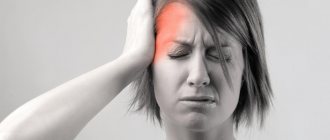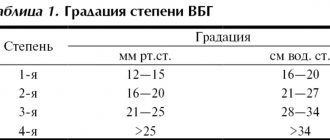Autonomic dysfunction, vegetative-vascular dystonia (VSD, SVD) is not a disease in the scientific sense of the word. However, such a phenomenon exists, occurs quite often and brings considerable suffering to its owners. So what is it? Autonomic dysfunction of the nervous system is a syndrome that has several causes, a complex of symptoms including disturbances in the cardiovascular, respiratory, and digestive systems, psychoneurological disorders, thermoregulation disorders and the formation of neurosis. The mechanism of occurrence of autonomic dysfunction is based on stress and excessive emotional stress against the background of existing somatic and neurological diseases. Other possible causes include alcohol abuse, hormonal imbalances, and some chronic diseases.
The manifestations of autonomic dysfunction are very numerous and individual for each patient. Invariable for establishing the diagnosis in question is the obligatory relationship between the manifestation of symptoms and the psychological state of the patient, his emotional experiences.
Causes of vascular headache development
Vegetative-vascular dystonia is an outdated name for autonomic dysfunction of the cardiovascular system. VSD is characterized by more than 150 symptoms, the most common of which is vascular headache.
The causes of headaches are:
- decreased tone of the blood vessels supplying the brain, which causes hypoxia (usually occurs with a systematic increase in pressure, which stretches the walls of blood vessels),
- pressure on nerve bundles specifically at the moment of a pressure surge (expansion of the walls of blood vessels),
- venous congestion and cerebral edema,
- arterial spasm.
Does the treatment of VSD differ for different symptoms?
For severe headaches, abdominal cramps and body aches, it is advisable to take an anti-inflammatory drug or analgesic. The choice of medication will depend on what exactly helps you in such situations.
If you experience frequent dizziness and general weakness, your doctor may recommend drinking 1-2 cups of coffee daily, or taking caffeine tablets.
Soothing and daily walks help to cope with insomnia, anxiety, and palpitations.
In case of pressure changes, paresthesia, loss of consciousness, a comprehensive examination and individual selection of medications that will relieve symptoms are required.
But the key to treating autonomic dysfunction with any set of symptoms will be regular intake of amino acids, which gradually normalize metabolism at the cellular level: glutamic acid, glycine and cystine. Therefore, for dystonia, Eltacin®, a drug with these amino acids, is needed as the main treatment. It helps eliminate the cause of dysregulation, and you will gradually forget about unpleasant symptoms.
Painkillers, heart medications, medications for high blood pressure, and sedatives do not solve the problem of VSD. Autonomic dysfunction with symptomatic treatment will not go away on its own, and over time it will become more pronounced. Dysregulated regulation reduces the body's ability to adapt to any stress, and can become the basis for the development of organic changes and diseases.
Symptoms of headache with vegetative-vascular dystonia
The symptoms of vascular headaches are very diverse, but the main difference from other types of pain is less intensity, rather “background” pain, but painful attacks, for example, migraines, can also occur.
- Headache with VSD accompanies a person constantly with varying intensity. She goes away during sleep, but returns within the first minutes after waking up. Due to the “background” course of pain, it often begins to be perceived as a normal condition. But if you ask such a patient if he has a headache, he will always answer “yes.”
- The pain with VSD is “dull.” It can be squeezing, bursting, pulsating, etc. Its intensity is low (except for attacks, which are also “dull”, although strong), therefore, if the patient complains of acute pain, this most likely will not be VSD.
- A constant headache slightly disrupts the perception of reality: sounds may seem muffled, the movements of the surrounding world are inhibited and excessively smooth. This condition can be dangerous for a person, as he may inadequately assess the situation and, for example, get hit by a car.
- Vascular headache is often accompanied by other vegetative manifestations and neurological conditions: dizziness, unsteadiness of gait and difficulties with balance and coordination of movements, fainting, drowsiness, weakness, nausea, tinnitus, “stars” before the eyes, increased sweating (especially of the palms).
- The pain may intensify when bending over, which once again proves its vascular origin.
- The localization can be absolutely any: the entire head, one half of the head, a “hoop” at the level of the forehead, only the forehead/temples/back of the head/vertex/eye sockets, with irradiation to the ear or neck.
- The nature of the pain is usually aching, squeezing or, conversely, bursting, often pulsating (not necessarily in time with the heartbeat).
- Painkillers are usually ineffective for vascular pain. In some cases, antispasmodics help.
Often, exacerbations of headaches occur during periods of intense and prolonged mental activity, strong emotional stress, physical overload, weather and climate changes, etc. Read more about the causes and symptoms of VSD here.
Diagnostics
The diagnosis of tension-type headache is primarily based on medical history and symptoms and neurological examination.
The doctor may be interested in answers to the following questions:
- When did the symptoms begin?
- Has the patient noticed any triggers, such as stress or hunger?
- Were the symptoms continuous or episodic?
- How severe are the symptoms?
- How often do headaches occur?
- How long did you last have a headache?
- What does the patient believe reduces symptoms and what increases symptoms?
In addition, the doctor is also interested in the following details:
- Characteristics of pain. Is the pain throbbing? Is the pain dull, constant or sharp?
- Pain intensity. A good indicator of headache severity is the amount of time a patient can work during a headache attack. Can the patient work? Are there any episodes where the headache led to awakening from sleep or sleep disturbance?
- Localization of pain. Does the patient feel pain throughout the entire head, only on one side of the head, or just in the forehead or eye sockets?
Instrumental examination methods
If a patient has unusual or intense headaches, the doctor may order additional testing to rule out more serious causes of the headaches.
The two most commonly used diagnostic methods are CT (computed tomography) and MRI, which allow visualization of organs and tissues and detection of morphological changes.
Diagnosis of headache due to VSD
A headache can occur in many cases and for various reasons, so it is very important to carry out a differential diagnosis of vascular headache:
- magnetic resonance or computed tomography (to exclude tumors, stroke, vascular malformation, consequences of traumatic brain injury, etc.), electroencephalography,
- X-ray of the head and cervical spine (to exclude sinusitis, skull injuries, displacement of the cervical vertebrae),
- vascular doppler,
- neurological examination (palpation of the neck and shoulder girdle, neurological tests),
- blood tests.
If you suffer from frequent headaches, you need to visit a neurologist who will prescribe the necessary tests and select adequate treatment.
VSD and panic attacks are disguised as cervical osteochondrosis.
VSD (vegetative-vascular dystonia) is one of the most tricky diseases. VSD and accompanying panic attacks are often disguised as cardiovascular, mental and other health problems. Vegetative-vascular disorder is associated with disturbances in the functioning of the autonomic nodes of the nervous system. These nodes (ganglia) are responsible for the normal functioning of almost all functions of our body: blood circulation, respiration, digestion, reproduction, excretion, metabolism and growth. Therefore, if there is a malfunction in their work, then a general malaise occurs, the variety of components of which ranges from headaches to disorders of the gastrointestinal tract, from mild weakness to a state of loss of consciousness. With VSD and panic attacks, a person does not understand what exactly is hurting him, and numerous examinations do not reveal any pathologies.
In addition, vegetative nodes are located throughout the body, and if they are unhealthy, then a person immediately feels tension or pain in the very part of the body where the unhealthy node is located. That is, if the nerve node in the cervicothoracic region does not work correctly, then first of all this will affect the muscles of the neck. And the first thing the patient will think about is “cervical chondrosis.”
Therefore, if you have a sore neck or are already experiencing panic attacks due to cervical osteochondrosis, then the problem is precisely that VSD, panic attacks and other symptoms are disguised as the so-called “cervical osteochondrosis.” Surprisingly, even such a common component of VSD as panic attacks is beginning to be misinterpreted as a sign of problems with the spine.
Understanding how the autonomic nervous system works also explains why neck pain typically occurs long (perhaps several years) before panic attacks occur. And with the development of panic disorder, patients often complain that neck pain (“cervical chondrosis”) begins to bother them right before a panic attack!
Now it becomes clear why outdated methods of treating cervical osteochondrosis and panic attacks do not bring the long-awaited results, and people live for years with symptoms of cervical osteochondrosis and panic attacks! It’s just that the treatment is aimed completely at the wrong area where it should be - at cervical osteochondrosis and the spine, and not at the VSD and the nervous system.
Treatment of vascular headache and prevention of VSD
There is no actual treatment for vascular headache, i.e. It is extremely difficult to stop an attack of pain. Therapeutic measures are aimed at increasing vascular tone, restoring normal blood circulation to the brain and improving the functioning of the cardiovascular system. Read more about the treatment of vegetative-vascular dystonia and specifically headaches at the Aximed neurology clinic “here”.
In addition to drug treatment for people suffering from headaches and other symptoms of VSD, Aximed neurologists recommend:
- eliminate stressful situations from your life as much as possible (change jobs, undergo a course of family psychotherapy, etc.),
- maintain a sleep/wake and work/rest schedule,
- stop smoking (this constricts blood vessels and weakens the elasticity of the walls),
- eat a complete and balanced diet,
- Jogging is highly recommended, since in the process the brain is actively saturated with oxygen (which may be lacking due to reduced blood supply to the brain),
- massages (especially the collar area).
Are you plagued by headaches? Consult a neurologist. Vegetative-vascular dystonia can be treated, but the more advanced the case, the longer it will take, and the more likely it is that the pain will return again. Do not delay treatment, because life without pain is much more pleasant.
Treatment of vegetative-vascular dystonia
If treatment is started in a timely manner, the result in most cases will be positive. However, it may take several months. The duration of therapy directly depends on the form of vegetative-vascular dystonia and varies between 4–10 months. It is impossible to prescribe a universal remedy for VSD that will definitely help overcome the pathology.
The main role in the fight against vegetative-vascular dystonia is played by a healthy lifestyle, feasible physical activity and lack of stress. In addition, to achieve results, you need to give up smoking and drinking alcohol, normalize your work and rest schedule, adhere to proper nutrition, diversifying your diet with vegetables, fruits, nuts and dairy products.
What is prescribed for VSD? Treatment of vegetative-vascular dystonia is a whole range of measures, which may include the following:
- diet;
- taking medications;
- physical therapy;
- breathing exercises;
- acupuncture;
- massage;
- balneotherapy;
- phototherapy;
- psychotherapy;
- physiotherapeutic procedures (massage, breathing exercises, etc.).
There are a lot of drugs prescribed for VSD. Their choice depends on the symptoms of the pathology, the person’s health status, age and other factors. Therefore, only a doctor can tell you what to take for VSD. For each patient, the doctor develops an individual treatment regimen (based on the clinical picture), which may include the following groups of drugs:
- soothing herbal remedies;
- antidepressants;
- tranquilizers and anxiolytics;
- nootropics;
- vascular drugs;
- psychotropic drugs;
- adaptogens, etc.
The diagnosis of cervical osteochondrosis is a myth.
Competent doctors know that the diagnosis of cervical osteochondrosis is one of the most persistent myths in medicine. And those who are less knowledgeable blame a great many problems on osteochondrosis, including panic attacks and symptoms of VSD.
Scientists have long discovered that osteochondrosis is a natural process of aging of the body. Even teenagers have signs of osteochondrosis on x-rays!
We inherited osteochondrosis from our ancient ancestors homo erectus (homo erectus), this is a natural consequence of the evolution of our species and the acquired ability to walk upright.
In fact, osteochondrosis itself does not contribute to the development of VSD and panic attacks and does not give rise to any pronounced clinical complaints. Even neck pain is not a sign of osteochondrosis! Not to mention other symptoms that are attributed to the diagnosis of cervical chondrosis.
What causes panic attacks, neck pain, and other symptoms that are so often attributed to cervical osteochondrosis?










